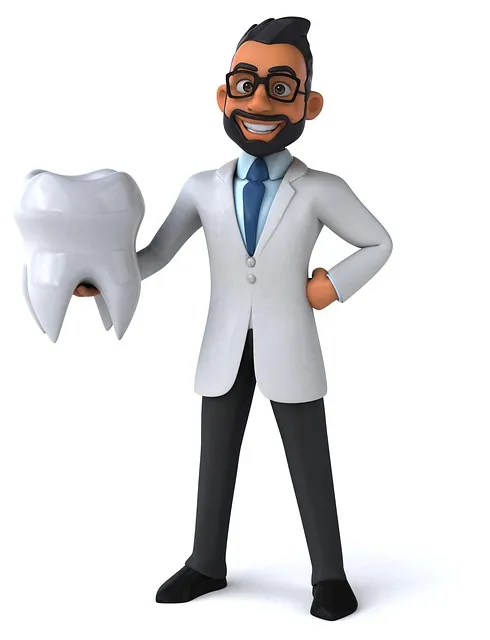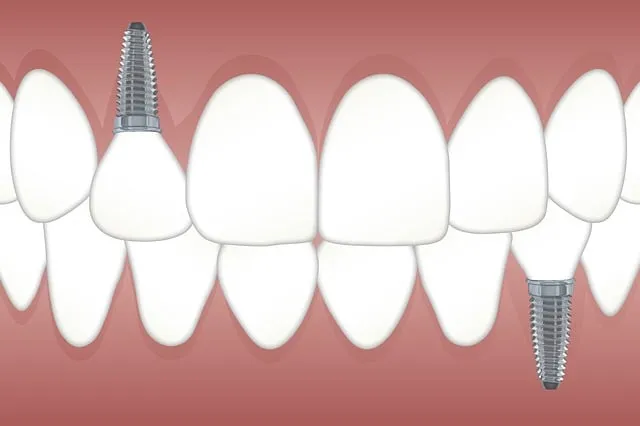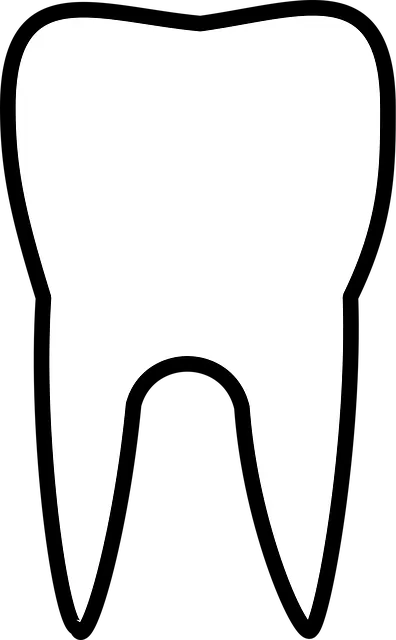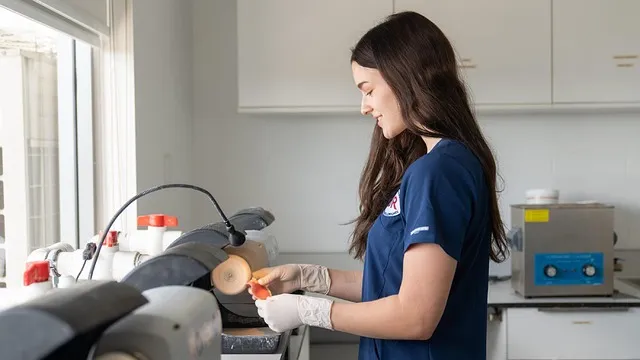Category: dental implants mcallen
Dental Implants McAllen: Restoring Smile Confidence
Introduction
Dental implants have emerged as a transformative solution for individuals dealing with tooth loss, offering a permanent and aesthetically pleasing alternative to traditional dentures or bridges. This article delves into the world of dental implants specifically in McAllen, exploring their significance, evolution, global impact, and the various factors shaping this dynamic field. By examining these aspects, we aim to provide a comprehensive understanding of how dental implants are changing lives and contributing to advanced oral healthcare.
Understanding Dental Implants McAllen
Definition and Core Components
Dental implants McAllen, at its core, is a surgical procedure designed to replace missing tooth roots and provide a solid foundation for artificial teeth. It involves the placement of small titanium posts (implants) into the jawbone, which mimic natural tooth roots. These implants serve as anchors for custom-made dental restorations, including crowns, bridges, or dentures. The process aims to restore both functionality and aesthetics, allowing individuals to enjoy a full range of oral activities with confidence.
Historical Context
The concept of dental implants dates back centuries, but modern advancements have revolutionized the field. Early attempts at tooth replacement included partial dentures and bridges made from materials like gold and silver. In the 1950s, titanium was introduced as a biocompatible material for implants, marking a significant milestone. Dr. Per-Ingvar Bråne, a Swedish dentist, is often credited with pioneering modern dental implant surgery, laying the groundwork for today’s advanced procedures.
Significance and Broader Landscape
Dental implants play a pivotal role in oral health and overall quality of life. They address various issues associated with tooth loss, including bone atrophy, neighboring tooth migration, and aesthetic concerns. By offering a long-lasting solution, implants help patients regain their chewing function, speak clearly, and maintain a natural appearance. This procedure is particularly beneficial for individuals who have lost one or multiple teeth due to trauma, disease, or poor oral health.
Global Impact and Trends
International Influence
Dental implants McAllen have gained worldwide recognition and adoption, with significant variations in popularity across regions. Countries like Sweden, Denmark, and the United States have been at the forefront of implant research and development, contributing to a global standard of care. The World Health Organization (WHO) estimates that over 300 million people worldwide are missing at least one tooth, creating a substantial demand for effective replacement solutions, including dental implants.
Key Trends Shaping Trajectories
- Growing Popularity: Dental implants have experienced steady growth in global adoption, driven by increasing life expectancy and rising awareness of oral health.
- Technological Innovations: Advancements in materials science, computer-aided design (CAD), and 3D printing have improved implant design and surgical precision.
- Regional Disparities: While demand is high worldwide, access to dental implants varies significantly between developed and developing nations.
- Cost Considerations: The cost of implants and associated procedures remains a critical factor influencing global trends, with price variations impacting adoption rates.
Regional Variations
- North America: Known for its advanced dental care, the US leads in implant research and spending. McAllen, Texas, is specifically recognized for its dental tourism, attracting patients from around the globe due to affordable and high-quality implant services.
- Europe: Countries like Sweden, Germany, and the UK have a strong presence in the dental implant market, known for their innovative techniques and materials.
- Asia Pacific: Rapid economic growth has led to increased demand for dental implants in countries like Japan, South Korea, and Australia.
- Latin America: Brazil and Mexico are emerging as significant markets due to favorable pricing and a growing focus on oral health.
Economic Considerations
Market Dynamics
The global dental implants market is characterized by intense competition, with numerous players offering various solutions. According to a 2022 report by Grand View Research, the market size was valued at USD 7.5 billion in 2021 and is projected to grow at a compound annual growth rate (CAGR) of 6.8% from 2022 to 2030. This growth is driven by factors like aging populations, rising dental health awareness, and technological advancements.
Investment Patterns
Dental implant manufacturers and service providers have attracted significant investments, reflecting the market’s potential. Venture capital firms and private equity investors have shown interest in this sector, funding research, development, and innovative startups. The attractiveness lies in the long-term patient benefits, repeat business (as implants require periodic replacement), and growing global demand.
Economic Impact
- Patient Savings: Dental implants can be cost-effective in the long term compared to traditional dentures or bridges, as they last longer and require less maintenance.
- Dental Tourism: Cities like McAllen have become destinations for dental tourism, attracting patients seeking high-quality implants at competitive prices, contributing to local economies.
- Job Creation: The industry supports a range of jobs, from dental specialists and technicians to administrative staff, fostering economic growth and development.
Technological Advancements
Innovations in Materials
Titanium has remained the gold standard for implant materials due to its biocompatibility, strength, and durability. However, recent advancements include:
- Titanium Alloys: New alloys offer improved mechanical properties, allowing for smaller, more precise implants.
- Hydroxyapatite-Coated Implants: This coating promotes bone integration, enhancing implant stability and osseointegration.
- Biomaterials: Researchers are exploring bioengineered materials that mimic natural bone tissue, potentially improving long-term success rates.
Computer-Aided Design (CAD) and 3D Printing
CAD technology enables dental specialists to create precise, customized implant designs tailored to individual patients’ anatomies. This precision leads to faster surgery times and reduced complications. Additionally, 3D printing allows for the fabrication of surgical guides and custom components, further enhancing treatment outcomes.
Digital Imaging and Navigation
Advanced imaging techniques, such as CT scans, facilitate detailed pre-operative planning. Digital navigation systems guide surgeons during the implant placement process, ensuring accuracy and minimizing tissue trauma. These technologies contribute to improved patient safety and surgical success rates.
Policy and Regulation
Key Policies and Regulators
Dental implants McAllen are subject to various policies and regulations that vary by region:
- Food and Drug Administration (FDA) in the US: The FDA regulates dental implants through the Medical Device Safety Act, ensuring product safety and efficacy. Implants must undergo rigorous testing and receive FDA approval before marketing.
- European Union (EU): The EU’s Medical Devices Regulation (MDR) sets out comprehensive requirements for implant manufacturers, including clinical evaluation and conformity assessment.
- International Organization for Standardization (ISO): ISO standards provide guidelines for implant design, manufacturing, and quality control, ensuring global consistency in quality.
Influence on Development
Regulatory frameworks play a crucial role in shaping the dental implant industry:
- Safety Assurance: Stringent regulations ensure that implants are safe and effective, protecting patient well-being.
- Standardization: Policies promote consistent quality standards, fostering trust among consumers.
- Market Access: Manufacturers must navigate regulatory requirements to gain market approval, driving innovation and competition.
- Patient Rights: Regulations also empower patients by defining responsibilities and guarantees, ensuring fair practices.
Challenges and Criticisms
Overcoming Barriers
Despite its many benefits, the dental implant industry faces several challenges:
- Cost and Accessibility: High costs remain a significant barrier for many individuals, especially in regions with limited insurance coverage or public healthcare systems.
- Surgeon Expertise: The procedure requires specialized training, and ensuring access to qualified surgeons is crucial, particularly in underserved areas.
- Complications: While rare, implant complications like infection, rejection, or mechanical failure can arise, requiring ongoing research for risk mitigation.
Proposed Solutions
Addressing these challenges involves:
- Government Initiatives: Subsidies, insurance coverage expansions, and public health programs can improve accessibility.
- Training Programs: Continued professional development and mentorship can enhance the expertise of dental surgeons.
- Research and Innovation: Advancements in materials science and cost-effective manufacturing techniques are essential to improving implant success rates and reducing costs.
Case Studies: Successful Applications
Example 1: Restoring a Patient’s Smile
Patient Profile: A 45-year-old female patient had lost three front teeth due to an automobile accident, leading to significant aesthetic concerns and chewing difficulties.
Treatment Approach: The dental team in McAllen performed a full oral evaluation, including CT scans for precise planning. They placed two dental implants in the upper jaw and connected them to custom-made porcelain crowns. The procedure was performed under local anesthesia, and the patient experienced minimal discomfort post-surgery.
Outcome: The patient’s new smile restored her confidence, enabling her to return to social activities and improve her overall quality of life. The long-lasting implants provided excellent functionality, allowing her to enjoy a variety of foods without worrying about tooth mobility.
Example 2: Treating Bone Loss
Patient Case: A 60-year-old male presented with severe bone loss in the lower jaw, making traditional implant placement difficult. He had previously undergone radiation treatment for cancer, which affected his oral health.
Innovative Solution: The dental specialists used a combination of bone grafting and advanced guidance systems to place multiple implants despite the limited bone volume. They utilized 3D printing to create a customized surgical guide, ensuring precise implant placement.
Results: The patient now enjoys improved chewing function and a natural-looking smile. This case demonstrates the adaptability of dental implants in complex scenarios and the potential of modern technologies.
Future Prospects
Growth Areas
The future of dental implants McAllen holds immense potential:
- Personalized Implants: Customization will continue to be a key focus, with implant designs tailored to individual patients’ needs and aesthetics.
- Miniaturization: Smaller, more delicate implants for specific tooth replacements could gain popularity, offering enhanced flexibility.
- Regenerative Medicine: Combining dental implants with stem cell therapy or tissue engineering may lead to advanced healing and improved osseointegration.
Emerging Trends
- Teledentistry: Remote consultations and guided implant surgeries using teleconferencing technologies will make dental care more accessible, especially in rural areas.
- AI Integration: Artificial intelligence can assist in implant planning, design, and surgery, improving precision and efficiency.
- Digital Payment Solutions: Secure digital payment systems may streamline the financial aspect of implant procedures, enhancing patient experiences.
Strategic Considerations
- Global Partnerships: Collaboration between dental professionals worldwide can lead to knowledge sharing and improved standards.
- Regulatory Harmonization: Efforts to align regulations across regions will facilitate international adoption and research collaboration.
- Patient Education: Increasing awareness about the benefits of implants through educational campaigns can drive demand and improve oral health outcomes.
Conclusion
Dental implants McAllen represent a significant advancement in oral healthcare, offering permanent and aesthetically pleasing solutions for missing teeth. This article has explored various facets of this procedure, from its historical roots to global trends and technological innovations. By understanding the economic impact, policy frameworks, and addressing challenges, we can appreciate the comprehensive influence of dental implants on patients’ lives.
The future prospects for dental implants are promising, with ongoing research and advancements poised to enhance their effectiveness and accessibility. As the field continues to evolve, McAllen’s position as a global leader in implant tourism solidifies, attracting patients seeking exceptional care and life-changing results.
FAQ Section
Q: What is the success rate of dental implants?
A: Dental implant success rates are generally high, ranging from 95% to 97% over a 10-year period. Success depends on factors like proper oral hygiene, good overall health, and skilled surgical placement.
Q: Are dental implants painful?
A: With modern anesthesia techniques, the procedure itself is usually pain-free. Post-operative discomfort is minimal and can be managed with over-the-counter pain relievers.
Q: How long do dental implants last?
A: Well-maintained dental implants can last a lifetime. The components, including the implant itself and the restoration (crown, bridge, or denture), may need replacement over time due to normal wear and tear.
Q: Can anyone get dental implants?
A: Most individuals with good general health and sufficient bone volume are suitable candidates for dental implants. However, certain medical conditions or inadequate bone density may require pre-surgery treatments or alternative solutions.
Q: How much do dental implants cost?
A: Costs vary based on the number of implants, restoration type, and geographic location. On average, a single implant with a crown can range from $3,000 to $15,000, depending on factors like materials used and surgical complexity.
Transforming Smiles: Dental Implants McAllen Experts You Can Trust

“Experience exceptional care and transform your smile with our friendly team in McAllen. Specializin…….
Emergency Dental Implants in McAllen with Dr. Cazares

For dental emergencies in McAllen, TX, Dr. Cazares offers swift care, treating toothaches, injuries,…….
Comprehensive Dental Exams for Long-Lasting McAllen Implants

Comprehensive dental exams are essential for maintaining optimal oral health, especially when it com…….
Experience Personalized Dentistry & Implants in McAllen’s Top Clinics

McAllen dental clinic at 1632 N. 10th Street offers personalized dentistry and advanced techniques l…….
McAllen’s Trusted Dentist: Implants & Longevity Care Relationships

Discover a dedicated dentist in McAllen, committed to fostering lifelong relationships and exception…….
McAllen Dentist: Same-Day Appointments & Dental Implants Today

McAllen dentists offer same-day appointments and a range of services from checkups to dental implant…….
Revolutionize Oral Health: Implants, Pain Relief, & Comprehensive Care in McAllen

Looking for advanced oral care solutions? Discover specialized treatments for gum disease, toothache…….
Dr. Cazares: Brightening Smiles in McAllen with Dental Implants

Dr. Cazares, a passionate dentist, established his practice in McAllen to serve diverse communities…….
Expert Care: Dental Implants & Gum Disease Solutions in McAllen

“In the realm of dentistry, complex gum disease cases and tooth loss present significant challenges……..
